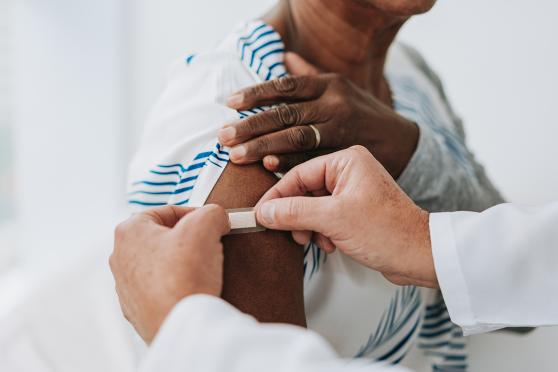Breathe easy and avoid the flu
Being hit with a cold or the flu is never fun. But it can be downright serious if you have chronic obstructive pulmonary disease (COPD). Here’s how to avoid complications — and keep yourself breathing easy all season long.

If you have COPD, you know just how serious flare-ups can be— the coughing and wheezing, the difficulty breathing, and shortness of breath. That’s why you want to be extra vigilant during cold and flu season. A common cold can not only make symptoms worse, but also put you at risk of a serious lung condition, such as pneumonia.
The good news? There are ways to lower your risk of getting sick. Protect yourself this season with four simple strategies.
Strategy #1: Get a flu shot and a pneumonia shot
Everyone 6 months or older should get a flu shot every year. Vaccination is the best way to protect yourself from the flu virus and related complications, says Michael Jhung, M.D., associate director for epidemiologic science in the Centers for Disease Control and Prevention’s Influenza Division. His advice? Aim to get vaccinated in September or October, before the virus starts spreading in your community. Protection kicks in about two weeks after getting the shot. But don’t worry if you miss that window, because you should still get vaccinated! Flu season stretches through the spring, so protection will help. Another smart tip if you’re age 65+: Ask about the “senior flu shot.” These flu shots for people 65 and older contain either a higher dose or an extra ingredient to help weakened immune systems mount a stronger response to the vaccine. Your doctor can help you decide if one of the two options is right for you.
- High-dose flu vaccine (Fluzone High-Dose) contains four times the amount of flu virus antigen — the part that sparks the immune system.
- Adjuvanted flu vaccine (Fluad Quadrivalent) contains an adjuvant, an ingredient added to the vaccine to help create a stronger immune response. If you get one of these shots, you may experience mild side effects, such as headache, muscle aches, or redness or swelling at the injection site. These usually resolve within one to three days.
People with COPD should also get a pneumonia shot. Not all pneumonia vaccines are the same, and they have different guidelines. Check with your doctor to find out which pneumonia shot is right for you.
Strategy #2: Keep your hands clean
“Try to avoid touching things in public that everyone else touches, and if you do, wash your hands or keep a little bottle of antibacterial wash in your pocket or purse to use on the go,” says Jane Martin of the COPD Foundation.
Some best practices: Scrub your hands with soap and water for as long as it takes you to sing “Happy Birthday” twice. Keep your phone or other items you touch often sanitized. And carry your own pen, to avoid having to use communal ones when you’re out.
Strategy #3: Stay away from crowds
Family gatherings, holiday shopping, and other classic seasonal activities are hard to beat. During cold and flu season, though, it’s best to limit mingling with people who may be sick. If you’re going somewhere where people might share germs, keep your visit brief. Go to the mall or movies during off hours. Young kids can carry cold germs, so be sure to wash your hands after spending time with them.
Strategy #4: Monitor your symptoms
If you do catch a cold, you might see changes in your COPD symptoms, including:
- Increased shortness of breath
- Blood in the mucus, or a change in color
- An increased amount of mucus
- Increased coughing
- Lack of sleep
If you feel short of breath or your mucus changes color, call your doctor right away. And if your symptoms don’t get better after 72 hours, don’t tough it out. Contact your health care team to find out what to do next. The sooner you do, the sooner you can get back to feeling like yourself again.


